As Illinois becomes the 50th state to allow the concealed carry of firearms, one shooting range a half hour out of Chicago is preparing for the influx of new shooters and turning heads in the process.
GAT Guns of East Dundee, Ill., recently added a monumental 39 new indoor lanes to its existing 24 making it one of the largest indoor shooting ranges in the country and the go-to destination for shooters near and far.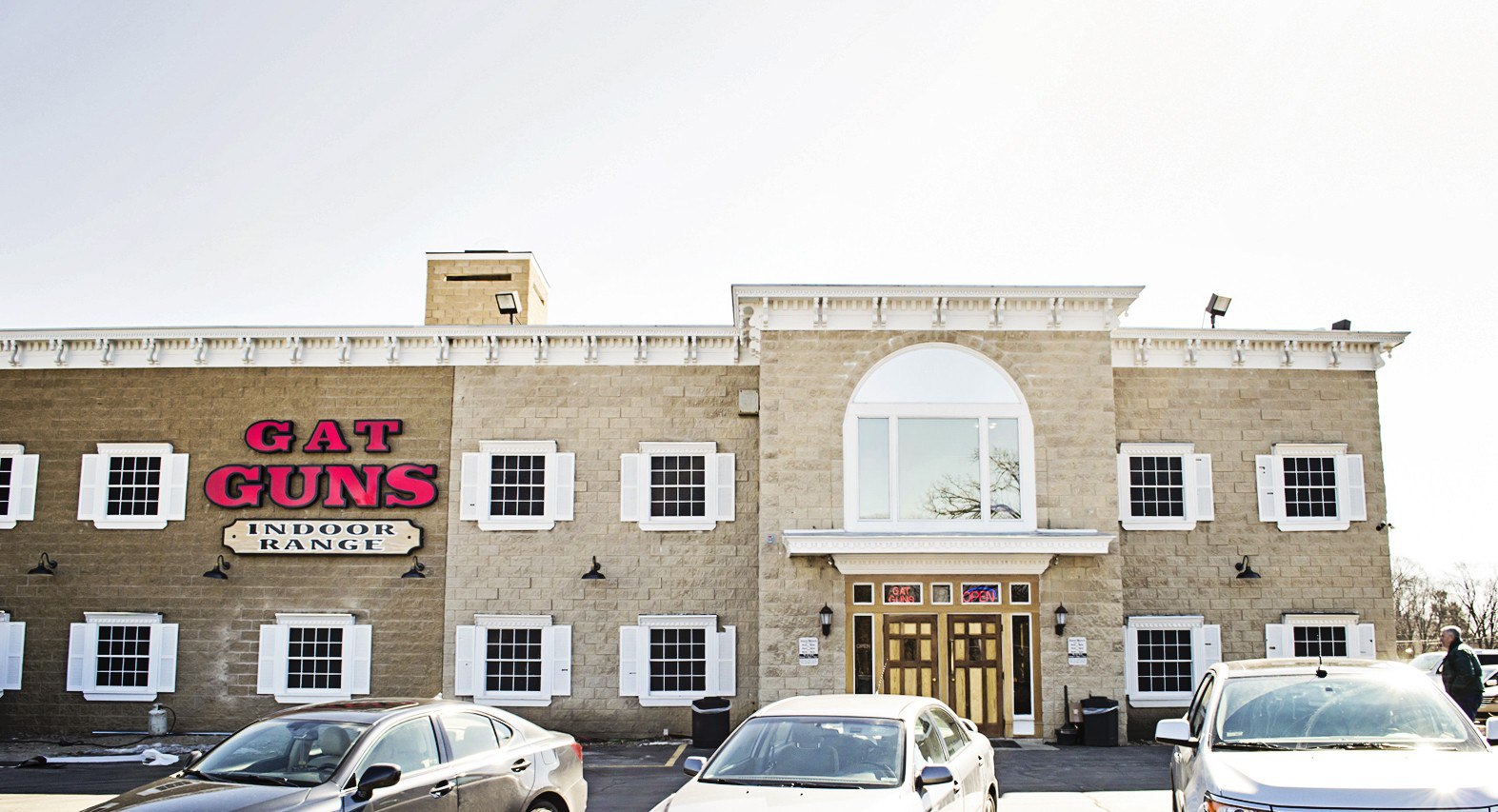
The new ranges, which were designed and installed by Action Target, include 50-yard and 75-yard bays with 14 lanes each as well as a 50-foot long tactical training range with 11 lanes. There is also a large classroom to accommodate the thousands of concealed carry permit applicants expected to come through the doors when the new law goes into effect on January 5.
“We foresaw a need for a full service training facility in the area,” GAT Guns General Manager Randy Potter said. “There’s nobody else around here that can take care of customers from A to Z as completely as we can. We have the training classes, the firearms inventory, the accessories, and now we have one of the most advanced firearms training facilities in the country.”
With the new Illinois concealed carry law requiring 16 hours of training (including live fire training on a shooting range), GAT Guns provides the ideal venue.
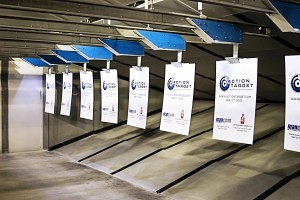
The new shooting bays include steel funnel bullet traps which safely collect and contain lead debris, bullet proof shooting stalls, an advanced air filtration system and Mancom target retrievers that allow for complete control over target distance, lighting effects and 360 degree random edging from an LCD control screen in every booth.
“Customers are blown away by the quality of the ranges,” Potter said. “The technology on our ranges allows shooters to control every aspect of their training. It’s an entirely new shooting experience.”
GAT Guns, which was founded in 1979, is already known as the Illinois headquarters of all things firearms with more than 6,000 guns in stock on any given day and 2,500 unique pieces on display.
“We consistently have folks from 150 miles south of here to the Wisconsin border and even as far west as the Mississippi River,” Potter said. “I attribute that to us being as unique as we are in size and scope as well as our commitment to professional customer service.”
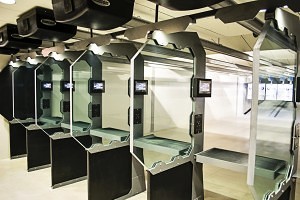
GAT Guns originally began in nearby Hanover Park and moved to the current location in 1989 where owner Greg A. Tropino (and thus the acronym “GAT”) bought an old restaurant and retrofitted it into the two-story gun supercenter it is today.
“Greg’s told me in the past that when he originally bought the building, he had no idea what he was going to put upstairs in the original footprint,” Potter said. “We’ve outgrown that by 10 times now.”
With 63 total lanes and shooting bays located on both floors, GAT Guns has quickly become one of the most talked about ranges in the country. It’s even attracted the attention of R. Lee “The Gunny” Ermey from Glock who spent a day there in May to promote the range and sign autographs.
“We had over 1,200 people wait to meet The Gunny that day he was here. It was a very fun event,” Potter said.
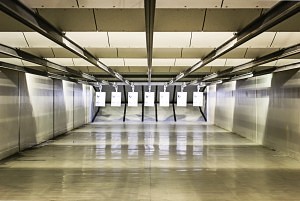
Even more than entertainment and retail, however, the mission of GAT Guns is to provide a central location for firearms education and quality training.
Training courses provided at the range currently include NRA First Steps, women only classes taught by women instructors, five phases of tactical pistol, five phases of tactical carbine, introductory handgun, practical holster and soon, Illinois concealed carry classes.
The new shooting bays recently opened up to the public and are also available for law enforcement qualification as well.







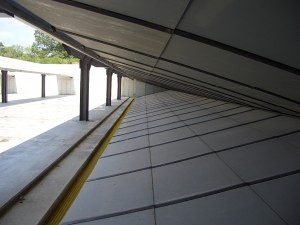
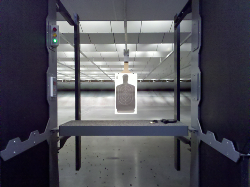 different portable systems to meet your budget and needs, running targets can easily be incorporated into your training program. The Track Runner provides the tools for a wide variety of situation with single or double track configurations, cardboard and steel target compatibility, variable speed and electric braking, and remote hand held control of movement.
different portable systems to meet your budget and needs, running targets can easily be incorporated into your training program. The Track Runner provides the tools for a wide variety of situation with single or double track configurations, cardboard and steel target compatibility, variable speed and electric braking, and remote hand held control of movement.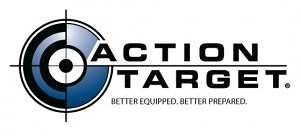 There are hundreds of things to take into consideration when building a shooting range, but your top priority should always be safety. Before anything else, make sure your range is going to be safe for your customers, your employees, and the environment. If you are considering building a range, talk to the
There are hundreds of things to take into consideration when building a shooting range, but your top priority should always be safety. Before anything else, make sure your range is going to be safe for your customers, your employees, and the environment. If you are considering building a range, talk to the  The Action Target Total Containment Trap can be a great solution to this problem if your daily foot traffic is able to balance the expense of installing and maintaining it. With two different types of lead removal systems, the TCT allows for varying levels of use and greatly diminishes the time you have to spend maintaining your shooting range. Essentially, the TCT is a giant armor steel
The Action Target Total Containment Trap can be a great solution to this problem if your daily foot traffic is able to balance the expense of installing and maintaining it. With two different types of lead removal systems, the TCT allows for varying levels of use and greatly diminishes the time you have to spend maintaining your shooting range. Essentially, the TCT is a giant armor steel 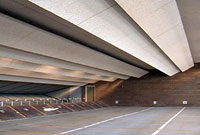 Action Target’s patented wall and ceiling baffles are designed to
Action Target’s patented wall and ceiling baffles are designed to 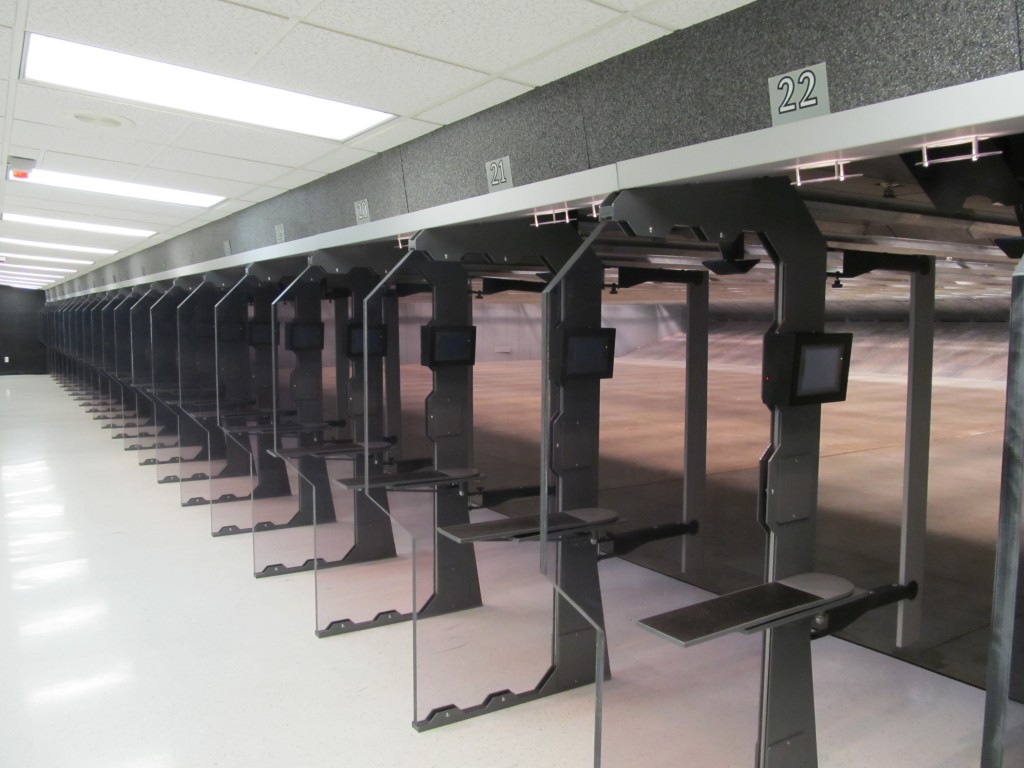
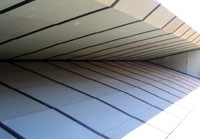 The equipment you install in your shooting range can also have a significant effect on your future success. If you anticipate a large number of shooters on your range every day, you may want to reconsider the
The equipment you install in your shooting range can also have a significant effect on your future success. If you anticipate a large number of shooters on your range every day, you may want to reconsider the 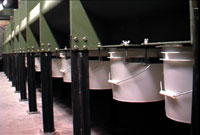 Time is money. The more time the range is shut down for service, the less money the range is making. In other words, each time a range has to shut down should be viewed as a potential loss of revenue. A range using a conveyor belt doesn’t have to shut down in order to service the trap because the conveyor is constantly collecting the fired rounds. When the range does shuts down for general maintenance, the workers don’t have to deal with clearing buckets and can better spend their time elsewhere.
Time is money. The more time the range is shut down for service, the less money the range is making. In other words, each time a range has to shut down should be viewed as a potential loss of revenue. A range using a conveyor belt doesn’t have to shut down in order to service the trap because the conveyor is constantly collecting the fired rounds. When the range does shuts down for general maintenance, the workers don’t have to deal with clearing buckets and can better spend their time elsewhere.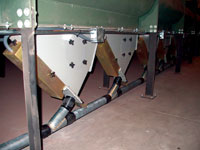 Contrarily, a
Contrarily, a 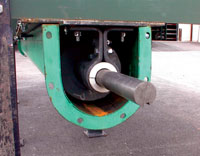 A final reason why the conveyor system is recommended in Total Containment Traps is safety. If a canister is allowed to overfill, the rounds will remain in the bullet trap and can potentially cause ricochet and/or clogging. Barrels can become filled with lead in as little as two weeks. The more the lead piles up, the bigger the safety issue. Range safety is critical and the screw conveyor system is the best choice for optimal safety.
A final reason why the conveyor system is recommended in Total Containment Traps is safety. If a canister is allowed to overfill, the rounds will remain in the bullet trap and can potentially cause ricochet and/or clogging. Barrels can become filled with lead in as little as two weeks. The more the lead piles up, the bigger the safety issue. Range safety is critical and the screw conveyor system is the best choice for optimal safety.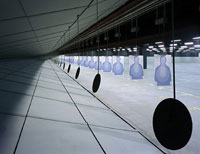 The Total Containment Trap is the dominant industry standard for modern, heavy-duty, steel bullet traps. It is the superior choice for ranges where safety, reliability, simple maintenance, and ease of use are top priorities. The TCT can be used both indoors and outdoors in all types of
The Total Containment Trap is the dominant industry standard for modern, heavy-duty, steel bullet traps. It is the superior choice for ranges where safety, reliability, simple maintenance, and ease of use are top priorities. The TCT can be used both indoors and outdoors in all types of 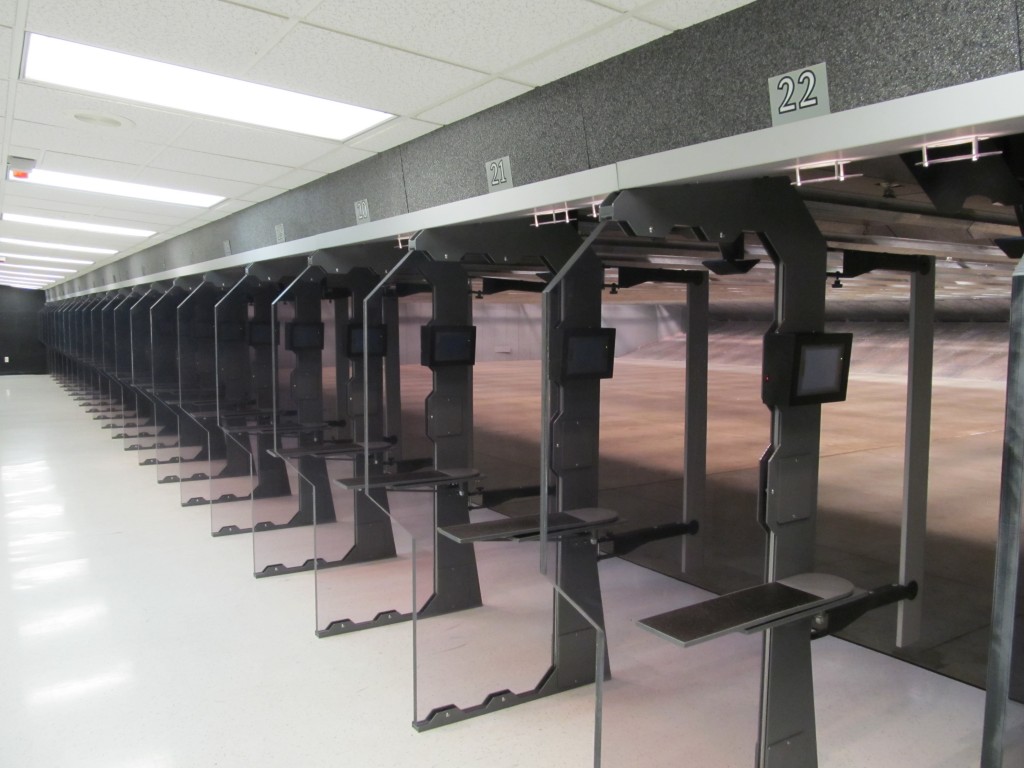 Action Target first worked with Ohio State Highway Patrol back in 1999 when we installed our “state of the art”
Action Target first worked with Ohio State Highway Patrol back in 1999 when we installed our “state of the art” 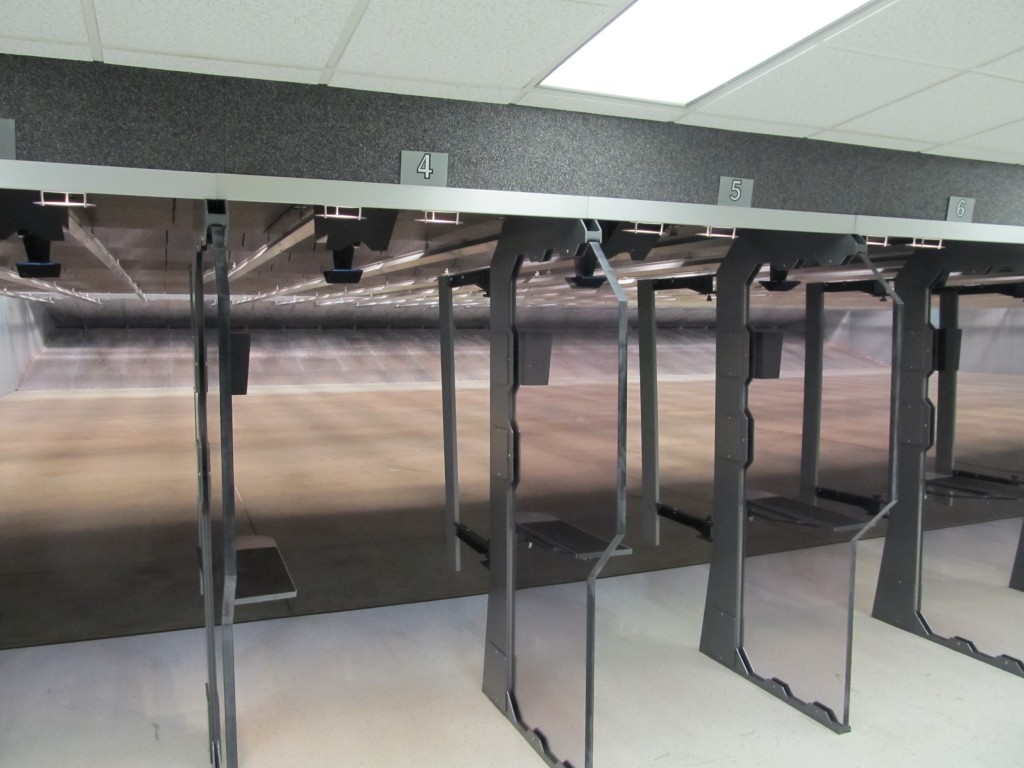 This 24 lane, 25 yard indoor range now provides officers a variety of training options, including timed training qualification courses and decision making drills. In addition, the total containment trap system, and
This 24 lane, 25 yard indoor range now provides officers a variety of training options, including timed training qualification courses and decision making drills. In addition, the total containment trap system, and 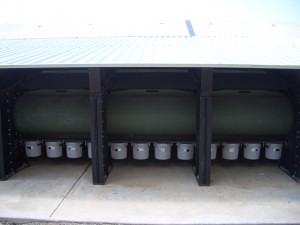 The Jay Henges Total Containment Trap measures 160 ft. wide with 20 shooting positions designed for heavy rifle use from the 100 yard firing line. The trap also features a unique self-supported engineered boom system that integrates into the frame of the bullet trap chambers, creating a support to the upper bullet trap plates without the need for a stand-alone truss system.
The Jay Henges Total Containment Trap measures 160 ft. wide with 20 shooting positions designed for heavy rifle use from the 100 yard firing line. The trap also features a unique self-supported engineered boom system that integrates into the frame of the bullet trap chambers, creating a support to the upper bullet trap plates without the need for a stand-alone truss system.